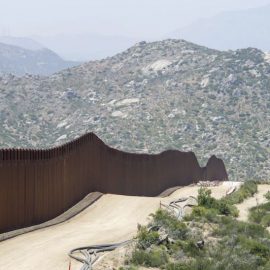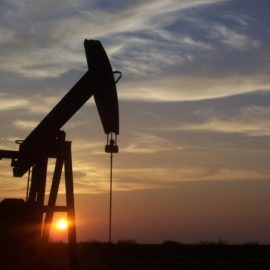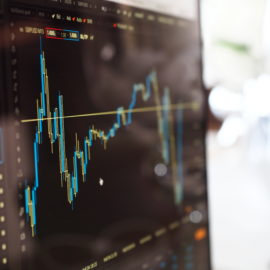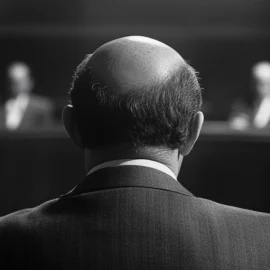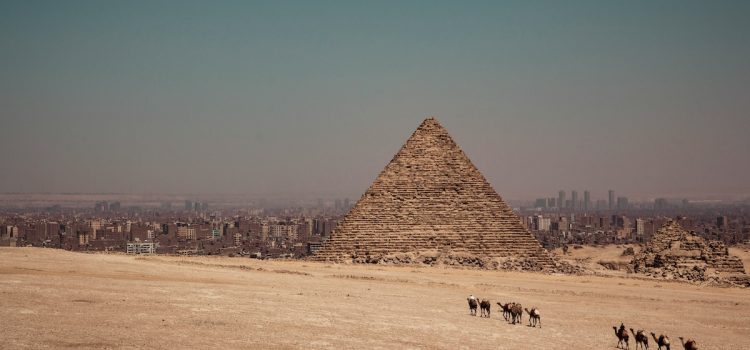
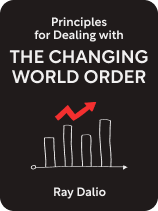
This article is an excerpt from the Shortform book guide to "Principles for Dealing with the Changing World Order" by Ray Dalio. Shortform has the world's best summaries and analyses of books you should be reading.
Like this article? Sign up for a free trial here.
Is history repeating itself? What can we learn from the rise and fall of past empires?
According to Ray Dalio, the rise and fall of empires provide insights into the patterns that shape global powers. He outlines the three stages empires typically go through, from their emergence to their eventual decline.
Keep reading to discover how these cycles might apply to our world today.
Ray Dalio on the Rise and Fall of Empires
According to Ray Dalio, the rise and fall of empires illustrate that human history evolves through cycles. A major cycle transpires roughly every 250 years and follows roughly the same broad pattern each time. In his book, Dalio explains the three stages that empires go through.
Stage 1: Empires Arise, Advance, & Gain Advantages
According to Dalio, all new orders emerge from periods of disorder. In other words, any empire rises from the ashes of a previous ruling power. Coming out of the preceding period of disorder, the new ruling group displays several key elements.
Strong leaders build the new order: They devise economic and sociopolitical institutions meant to develop the wealth and power of their group. They emphasize education and values such as work ethic in order to encourage the development of a productive, prosperous, and inventive society.
(Shortform note: Where do leaders come from? While Dalio doesn’t explicitly say, historian Doris Kearns Goodwin argues in Leadership: In Turbulent Times that great leaders tend to be people who grow through personal challenges that shape who they are and how they lead. For instance, Abraham Lincoln’s failure to fulfill campaign promises early in his political career drove him to a path of self-improvement that made him the thoughtful, articulate, and honest president he became.)
A wealth-generating class emerges: Ambitious types such as merchants, inventors, artisans, and financiers work to develop technologies and, in turn, bring wealth to themselves and thereby their country. This class of wealth-earners tends to cooperate with the government and military to stabilize and maintain their emerging order with laws that support and enable their status quo. (Shortform note: In terms of Marx’s theories in The Communist Manifesto, this class is the bourgeois, and their primary goal is indeed—as Dalio says—to maintain and expand the status quo that benefits them at the expense of the laborers, or proletariat.)
With a burgeoning economy and civil society, a rising nation tends to gain a large share of world trade. The actors that directly hold power tend to be the economic and political elites, as well as top military brass, and they work together to protect their nascent nation. The government will typically invest in its military, which can protect trade routes and defend borders. At the same, they’ll reinvest their accumulating wealth into education, the economy, and other civil institutions that further improve quality of life for those in the home center of the empire.
(Shortform note: A nation’s share of world trade may depend not just on a strong civil society and economy, but also on historical violence. In The Divide, Jason Hickel argues that the European empires of the last 500 years—which feature prominently in Dalio’s model—got the wealth to invest in their militaries and economies through the Spanish conquest of Latin and South Americas, which saw a huge windfall of gold and silver flow back to Europe. In turn, that wealth gave Europe trade advantages while impoverishing the exploited colonies.)
The economy becomes more advanced: Around the same time, high concentrations of wealth give rise to financial institutions such as banks and markets. Banks can give loans, which fuel productive economic activity by giving people leverage beyond the hard capital they hold. In time, strong financial systems lead to the emergence of a major financial center—today, these include New York, London, and Shanghai—that allows the country to further consolidate its wealth.
With a dominant position in world trade and finance, the increasingly powerful nation tends to become the holder of the reserve currency—the stable currency against which all other currencies, on the international scene, get measured. Because people prefer to operate in a stable reserve currency, even more wealth flows through the financial systems of this nation.
(Shortform note: Since WWII, the US dollar has been the world’s reserve currency. What that means in practice is that a large portion of international trade is conducted in US dollars, so the central banks of many countries hold a reserve of dollars in order to participate in the global economy. Because most countries want dollars, the US gains certain advantages—all other currencies are measured against the dollar, and the US can borrow money at lower costs. While the dollar isn’t as strong as it once was, experts anticipate that China’s yuan won’t overtake it anytime soon. The US also boasts five of the world’s top financial centers, with Singapore being Asia’s largest competitor city.)
Shortform Example: The United States
These dynamics unfold not immediately, but over many years—often decades or longer. As an example, consider the beginnings of the United States:
- After a violent revolution to break away from England, well-educated leaders came together to outline a new government and society.
- Drawing from Protestantism, early American society emphasized moral discipline, a steadfast work ethic, and civil cooperation. Opportunity was abundant, and the gaps between the haves and have-nots were small relative to today.
- Innovators such as Thomas Edison and Benjamin Franklin created numerous useful technologies, pioneered new ideas, and advanced civil society.
- The Industrial Revolution in the US saw the invention of even more new technologies and the creation of much wealth. Meanwhile, New York was growing as a strong financial center that would eventually have global importance.
- The US weathered the Great Depression in the 1930s, and then rose to the status of a political, economic, and military superpower after playing a leading role in the Allied victory in World War II.
- Today, the US dollar is the world’s reserve currency—a key indicator of the pattern Dalio describes above—and New York City is the world’s leading financial center.
Stage 2: Empires Peak, Stall, & Weaken
When a major power has prospered for a time, the features described above—strong finances, robust civil society, and an advantageous geopolitical position—tend to weaken. In brief, prosperity leads to comfort and complacency that begins to erode the power’s strengths.
Socioeconomic mobility decreases: Financially, people tend to think that good times will continue, so they spend and take on debt accordingly. Debt increases across the board, people have less spending power, and so socioeconomic mobility decreases. (Shortform note: This attitude that only good things will happen to us is the “optimism bias,” a cognitive bias most people carry wherein we each think we’re more or less immune to negative outcomes. Financially, it might explain why people get reckless with debt and spending, as Dalio says.)
Wealth gaps appear: During a power’s rise, some people—usually a small minority—get very rich while others remain middle class or, more likely, quite poor. Socioeconomic class divides become more apparent as a power reaches its peak and early optimism wanes. (Shortform note: Where do wealth gaps come from? In the United States, they correlate with a number of historical factors, including slavery and immigration. For example, modern Americans whose ancestors were enslaved are less likely to be wealthy today, while the descendants of families that profited from slave labor are less likely to be poor today.)
The economy becomes less competitive: Since the power is still relatively wealthy per capita, its workers become less competitive on the global market. For instance, it costs much more to employ a European or North American employee than one from South Asia. (Shortform note: As multinational firms go abroad for cheaper labor, they also often exploit the people providing it. Jason Hickel argues in The Divide that one way to fix this could be to introduce a global minimum wage, adjusted relative to each nation’s median income. That way, private firms could find competitively priced labor without also impoverishing their workers.)
Technological advantages diminish: Meanwhile, the technologies and inventions that brought wealth to the power begin to spread, so it alone no longer benefits from them as a source of wealth and prestige. For instance, industrial methods that originated in England spread to the rest of Europe and to the United States—and later, to much of the world. (Shortform note: One way that the inventors of technologies preserve their advantages is through patents—but patent terms don’t last forever. In the United States, patents last 15-20 years, while copyrights can last for at least 70 years and sometimes more. Beyond those terms, the technologies can be reproduced and used by others.)
Civil character weakens: Among the wealthy “haves,” people have become used to wealth and leisure—used to living the good life. Born into prosperity, they don’t care for the hard work it takes to maintain it and are unprepared for challenging economic and political circumstances. At the same time, the “haves” use their power to influence the political system to advantage themselves and their children. This exacerbates the growing gaps in values and wealth between them and the “have-nots,” fueling resentment along class divides.
(Shortform note: A real-world example of this is the Ivy League, a group of colleges in the United States that often favor “legacy” students and exclude applicants who don’t come from elite social classes. As William Deresiewicz argues in Excellent Sheep, this actually worsens educational quality and perpetuates social inequality by segregating the rich from the poor and funneling the children of elite families into positions of power and influence, regardless of merit.)
The empire becomes unprofitable: Finally, large empires become unprofitable. The cost to maintain military protection of dominance over trade routes and geopolitical positions becomes a net loss of capital; and holding the reserve currency often leads a power’s leaders to slacken up on financial discipline. Major actors tend to borrow in excess and build up large debts to foreign lenders.
Eventually, funds run dry and the power struggles to finance itself. At this point, wealthy investors who remain mobile tend to exit their investments. In other words, they move their wealth out of holdings in the major power’s currency and businesses. This capital flight further weakens the economic bases of the power.
(Shortform note: Military protection of trade routes isn’t the only way an empire can lose economic power. The Spanish empire of the 16th and 17th centuries is largely considered to have begun its decline after the defeat of the Spanish Armada, a naval fleet with which it had attempted to conquer England. Combined with expensive domestic problems such as plague and a declining population, this defeat spelled the looming end for the Spanish.)
Stage 3: Empires Unravel & End
After rising, then peaking and beginning to slow, a power tilts toward a fall. Weakened by a declining civil society and eroded financial, political, and military strength, the major power typically goes through a period of internal disorder. In turn, this can catalyze external disorder—change on the world stage, between powers—if the power doesn’t restabilize. Most often, Dalio says, falls lead to violent revolutions and new orders.
(Shortform note: Two examples of unraveling empires are Rome in the mid 400s AD and the West (Europe and the US) today. As Peter Heather and John Rapley argue in Why Empires Fall, both empires display remarkable parallels in how, after long periods of prosperity and wealth accumulation, their middle classes weakened, quality of life went down, their militaries shrank, and their wealthy chose to move money elsewhere. While the Western Roman Empire did collapse, it remains to be seen whether the United States can stabilize and persist.)
The catalyzing event is often an economic crisis. When large debt burdens coincide with an economic downturn, a power can find itself in financial as well as sociopolitical crisis. If the country can’t pay off its debts, it has to either default or print large amounts of money. According to Dalio, it usually chooses the latter. (Shortform note: The United States has weathered two major recessions in recent years: The 2007-09 Great Recession and the Covid-19 Recession in 2020. They saw massive contractions in economic activity and the loss of many jobs, and while the US has recovered from both, experts suggest the possibility of another recession in 2024.)
Printing large amounts of money causes inflation, which, in turn, devalues a currency and brings about economic hardship. When this hardship coincides with the gaps in wealth and values that became apparent during the peak, a power can experience harsh political conflict. In many cases, populism rises up. Populist leaders appeal to the values of the disenfranchised have-nots, and they sometimes try to reform the existing order to redistribute wealth from the rich to the poor.
(Shortform note: Viktor Orban, the long-time prime minister of Hungary, is a prime example of a populist leader who rose to power during economic hardship. He was first elected in 2010, on the heels of economic recession in Europe, and has remained popular by appealing to nationalist sentiment, using propaganda, and wielding us-versus-them narratives against migrants and the EU.)
Wealthy people want to hold onto their wealth, so they often leave nations that try to serve the general population more than the rich. To avoid high taxes or more extreme redistribution measures, they reinvest, move their holdings into different currencies, and relocate. As wealth floods out from a major power’s borders, its economic base grows even weaker. Dalio says that the government may close the borders to prevent capital flight. Meanwhile, prevailing economic hardship means that productivity continues falling, so less new wealth gets generated and there’s less to go around.
(Shortform note: In The Divide, Jason Hickel explains that today, wealthy individuals and corporations use a global network of tax havens, which includes countries like Ireland, Samoa, and Hong Kong, to covertly move and store wealth. This allows them to avoid taxes, extract profits from foreign nations, and, as Dalio says, to exit nations that don’t serve their interests. These outflows are often illicit, and they tend to impoverish the nations they flee from because money moved covertly can’t be taxed and reinvested in those nations. Recent trends also indicate that US millionaires are increasingly seeking secondary citizenships so that if need be, they can move more easily between their home country and others in Europe and elsewhere. )
In this increasingly impoverished and disordered situation, autocratic leaders often emerge to take control, promising order and restoration (think of Adolf Hitler’s seizure of power in Germany, at the time a poor and conflicted country in the years between World War I and World War II). This often leads to outright conflict that escalates into revolution—sometimes peaceful, but most often violent—after which the winners create a new economic and political system, and the cycle begins anew.
(Shortform note: One such leader was Francisco Franco, Spain’s 20th-century dictator who grabbed power with a military coup that took advantage of Spain’s fragmented political situation in the 1930s. In the midst of partisan conflict and through the ensuing civil war, Franco succeeded with help from Hitler’s Germany—a characteristic example of the violent revolution and subsequent creation of a new system that Dalio describes above.)

———End of Preview———
Like what you just read? Read the rest of the world's best book summary and analysis of Ray Dalio's "Principles for Dealing with the Changing World Order" at Shortform.
Here's what you'll find in our full Principles for Dealing with the Changing World Order summary:
- How to use patterns in world history to make better decisions today
- What may happen in the near future for the United States and China
- Why humans are stuck in a competition for wealth and power


